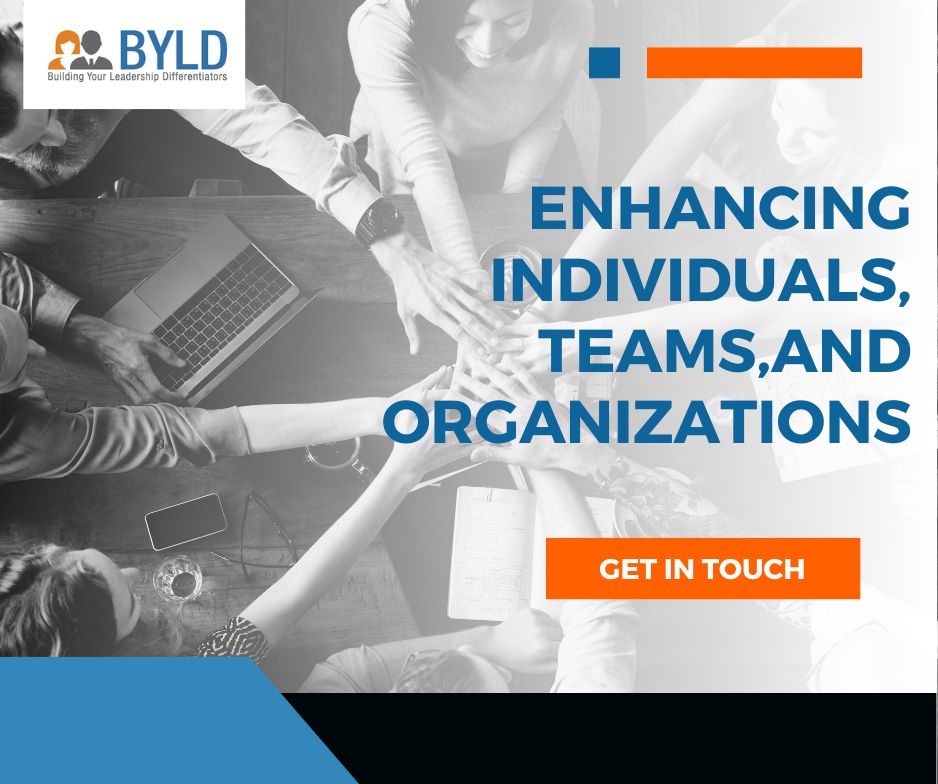
Benefits & Advantages of Experiential Learning for an Organization
- April 23, 2025

Article Content
Overview
In the success of corporate training and corporate companies, how we provide training is often ignored. Unfortunately, corporate learning typically concentrates on the knowledge that has to be communicated, thereby making it an intellectual activity that instructs people what to do or how to accomplish it. It may be sufficient in some restricted instances. The most successful technique of teaching is by concentrating on the employee rather than on the presenter.
The experiential study is, by definition, oriented toward employees because it includes employees acting in their learning. They get to try the new competencies in a risk-free setting and discover how new behaviors are more efficient than old ones.
What is Experiential Learning?
Experiential learning, also known as interactive learning, is a potent training technique that helps trainers in the office grow personally and professionally. Without genuinely depending on traditional knowledge, the experiential learning process helps employees engage actively in real-world scenarios, which helps them develop and enhance their practical knowledge and skills. To develop practical skills and knowledge, hands-on experience, also known as learning by doing, plays a crucial role in employees’ lives.
Experiential learning also helps new employees by providing them with transferable skills such as creativity, team collaboration, critical thinking abilities, problem-solving skills, etc. These work-based learning skills remain helpful for individuals’ professional development, thus enhancing their personal growth. Interactive learning provides new trainees the opportunity to challenge themselves by engaging with complex real-world issues; this work based learning helps the learners to build their confidence, resilience and self-awareness. Thus, experiential learning activities eventually helping employees to build critical thinking abilities, as well.
If your company training expenditure is to optimize the ROI, Here are some of the:
Advantages of Experiential Learning:-
1. Highly Committed to the Audience of Today:
While cell phones make it easier for you to check in from anywhere, the disadvantage is that you can handle all the distractions of the business and the whole world. Participants can mentally and sometimes physically check out at passive training sessions, such as lectures or seminars when notification is given.
On the other hand, the experience is immersive. The concentration of the participants is sufficiently interesting to maintain their attention and focus on the activity. And because it’s entertaining, trainees want to become a part of it and won’t check their telephones for pleasant entertainment.
2. Builds Conviction to Do Things:
The course ends with a post-experience study in which participants get an opportunity to discuss how and why things happened. A training session makes good use of Experiential Learning. This purposeful analysis of what they did individually and how it influenced results allows participants to identify the relationship between their activities and their results.
They then link the way you win the game and how you can apply the same principles for working. Not only does this technique teach a new habit or ability, but it also shows precisely why it is necessary. Candidates can comprehend how to use it at work and the advantages of experiencing it by testing and experiencing the skills in the training environment for their own sake. They are convinced of the capacity to use the skill or the behavior at work when they have experienced it in a safe setting and that it deserves the effort.
3.Adaptable to All Training Programs for Companies:
We can use Experiential Learning for every business training endeavor, safety and compliance training, competence development, and sales efficiency training. It may be customized to improve the effectiveness of your organization and can be integrated into existing or future corporate training programs.
4.Maximize your ROI in Business Training:
Because workers acquire the training contents in a secure atmosphere and can use their knowledge confidently back to work, their performance has a demonstrable influence within a short time. If individuals use what they have learned immediately, they will keep what they have learned more probably, and the advantages of training get enhanced when they experience the effects of these changes. The potent mix of retention and strengthening of learning makes the ROI for experiential learning one of the finest methods for training.
Read More – Ultimate Guide to Experiential Learning and Team Building Activities
Benefits of Experiential Learning Go Beyond a Visible Change
Experiential learning goes far further than a mere transfer of knowledge. Many employees benefit from engaging in practical experiences to learn best since it places them at the center of their learning. Corporate apprenticing offers participants the opportunity to genuinely grow their skills and the conviction they need to execute corporate training teachings and improve their performance.
The comprehensive provision of experiential learning solutions for virtual and classroom courses by Eagle’s Flight revolutionized education and development. Do you want to experience this change in your organization?
Key Benefits of Experiential Learning
There are many key Benefits of experiential learning, these are as follows:
Enhances knowledge retention
To engage in real-world experiences, learners adopt learning by using tactics that make information more memorable to them. When learners actively participate in experiential learning activities, they retain knowledge more effectively than through traditional learning methods like lectures or reading.
Boosts engagement and motivation
To boost employee motivation and engagement, corporations implemented job rotation programs to assist them in developing new skills or stretch assignments, which are new tasks offered to employees outside of their current designation in the organization, to keep them from becoming bored at work and to provide opportunities for professional development. These types of personalised learning program help provide a dynamic working environment and increase job satisfaction among employees. Following work based learning activity, employees gain hands-on knowledge, flexibility, and problem-solving abilities, leading to increased engagement and productivity.
Develops problem-solving skills
Real-world challenges require employees to think critically and find solutions. Thus, this benefit of experiential learning supports adaptive learning by helping individuals develop problem-solving abilities. It places them in situations where they must analyze, assess, and respond to complex problems, fostering adaptability and critical thinking skills.
Encourages teamwork and collaboration
When a manager allows their employees to work in a team by assigning collaborative projects, it fosters experiential learning, allowing them to gain hands-on experience in problem-solving. This approach enhances employees’ teamwork and collaboration skills while also strengthening their communication abilities.
Improves adaptability and critical thinking
Experiential learning immerses learners in hands-on experiences, exposing them to unpredictable situations that require quick adaptation. They develop critical thinking skills by analyzing different scenarios, making decisions, and adjusting strategies based on real-time feedback.
Bridges the gap between theory and practice
Traditional learning methods often focus on theoretical knowledge, while experiential learning ensures that learners apply what they’ve learned in real-world contexts. This connection strengthens understanding and makes learning more practical and relevant.
Strengthens decision-making abilities
Experiential learning allows individuals to face real challenges and make decisions based on analysis and experience. By practicing decision-making in a controlled environment, learners gain confidence in their ability to assess situations and choose the best course of action.
Experiential Learning vs. Traditional Learning
In a corporate setting, “experiential learning” means learning through hands-on, real-world experiences and active participation, while “traditional learning” refers to more passive methods like lectures and reading, which primarily focus on theoretical knowledge without direct application in a work environment; essentially, experiential learning emphasizes “learning by doing” while traditional learning focuses on “learning about” any particular topic.
Real-World Applications of Experiential Learning
Experiential learning, which means “learning by doing,” has a wide range of real-world applications, including internships, simulations, and project-based learning, which is designed to connect theoretical knowledge with practical experience in real-world situations. Many organizations use simulations, case studies, and role-playing activities to develop leadership skills.
Read More – Experiential Learning Programs: Meaning, Activities, and the Importance of Learning Through Experience
How to Implement Experiential Learning in Organizations
Experiential learning is a powerful method to enhance employee skills, improve engagement, and foster a culture of continuous learning. By incorporating hands-on learning techniques, organizations can create impactful training programs that drive better knowledge retention and skill development. Here are some effective ways to implement experiential learning in the workplace:
1. Role-Playing and Simulation Exercises
Employees may practice real-life situations in a safe setting by using role-playing and simulations. These activities aid in the development of decision-making, communication, and problem-solving skills.
- Training in customer service: Staff members may practice dealing with challenging clients and settling disputes.
- Development of leadership: Managers may participate in simulations that test their leadership ideas and strategic thinking.
2. Gamified Learning Experiences
By adding features such as competition, prizes, and challenges, gamification enhances learning and makes it more engaging.
Point-based incentives: When trainers finish training courses or resolve company problems, they earn points.
Leaderboards: Encourage healthy competition by ranking employees based on their learning progress.
Scenario-based games: Use digital tools or face-to-face exercises to model real-world obstacles that staff members must overcome.
3. Outdoor and Adventure-Based Learning Activities
Outdoor learning fosters teamwork, resilience, and problem-solving skills in a fun and engaging manner. It also helps break the monotony of traditional training sessions.
- Leadership camps: Outdoor leadership initiatives test participants’ ability to think critically and act quickly.
- Adventure-based problem-solving: Activities such as escape rooms or treasure hunts may be made to improve strategic thinking.
4. Case Studies and Problem-Solving Workshops
Using real-world case studies allows employees to analyze situations, identify key problems, and develop innovative solutions.
Industry-specific case studies: Provide employees with challenges relevant to their field and encourage collaborative discussions.
Brainstorming sessions: Motivate groups to discuss and provide answers to challenging business problems.
Cross-functional problem-solving: Assemble staff members from several departments to work together to address organizational issues.





